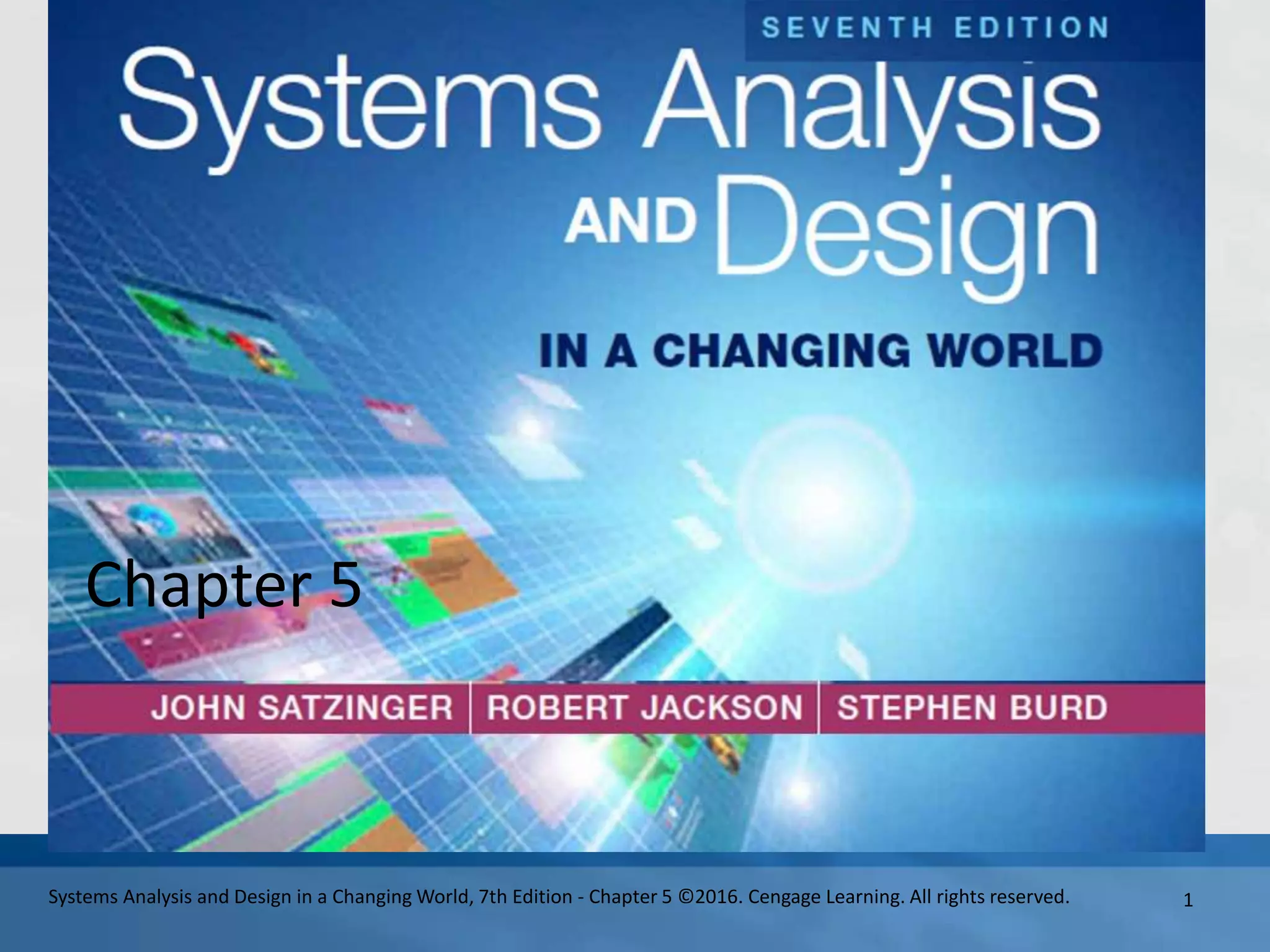This chapter discusses use case modeling techniques including developing detailed use case descriptions, activity diagrams, system sequence diagrams (SSDs), and integrating requirements models. It covers writing use case descriptions with elements like name, scenario, triggering event, actors, flow of activities, and exceptions. Activity diagrams and SSDs can show the flow of activities and inputs/outputs for a use case. Relating use cases to domain classes through CRUD analysis helps ensure all requirements are addressed.





















![Message Notation for SSD
[true/false condition] return-value := message-name
(parameter-list)
An asterisk (*) indicates repeating or looping of the message
Brackets [ ] indicate a true/false condition. This is a test for that
message only. If it evaluates to true, the message is sent. If it evaluates
to false, the message isn’t sent.
Message-name is the description of the requested service written as a
verb-noun.
Parameter-list (with parentheses on initiating messages and without
parentheses on return messages) shows the data that are passed with
the message.
Return-value on the same line as the message (requires :=) is used to
describe data being returned from the destination object to the source
object in response to the message.
22
Systems Analysis and Design in a Changing World, 7th edition – Chapter 5 ©2016. Cengage Learning. All rights reserved.](https://image.slidesharecdn.com/sadcw7echapter05-done-210921081725/75/Sadcw-7e-chapter05-done-22-2048.jpg)










